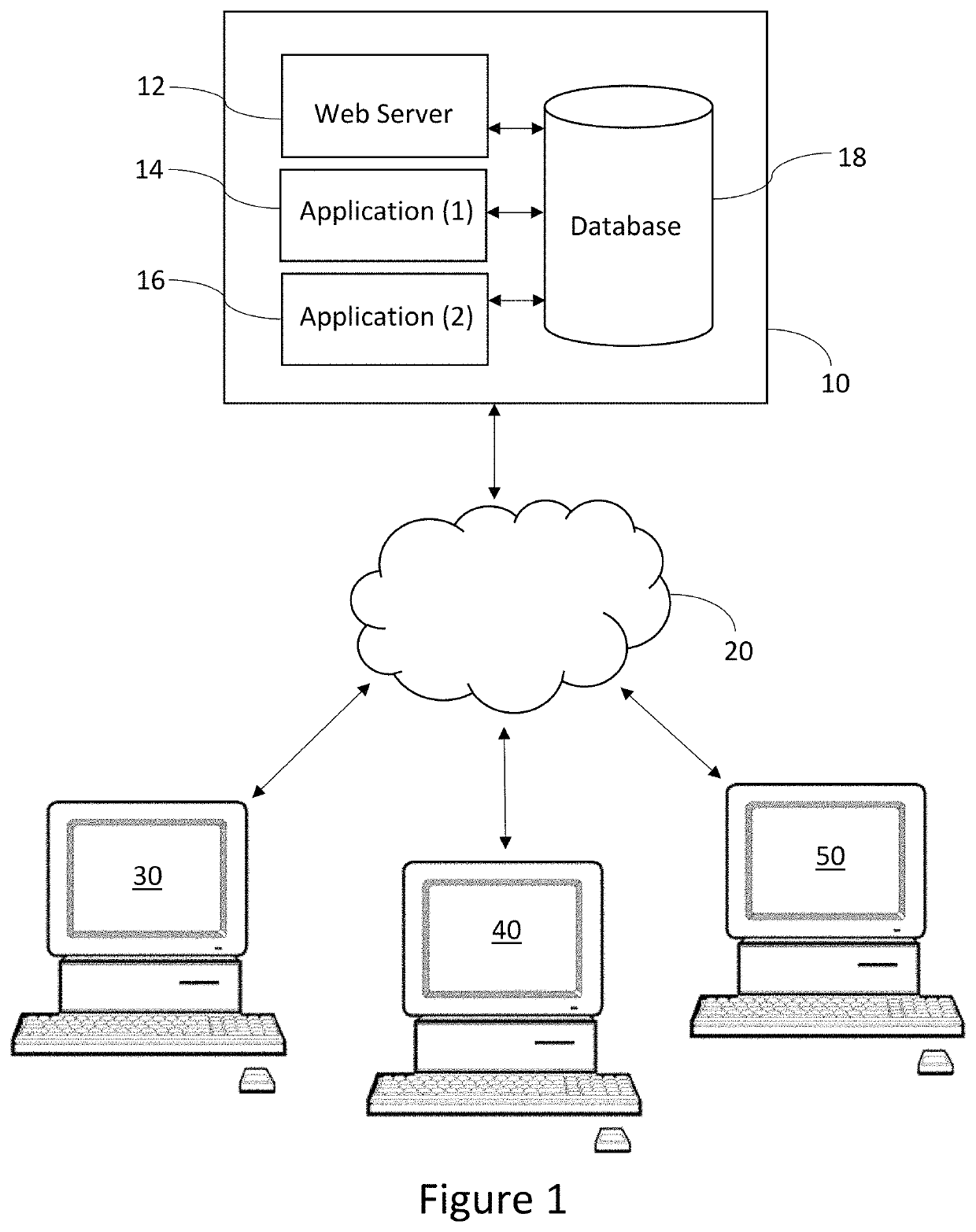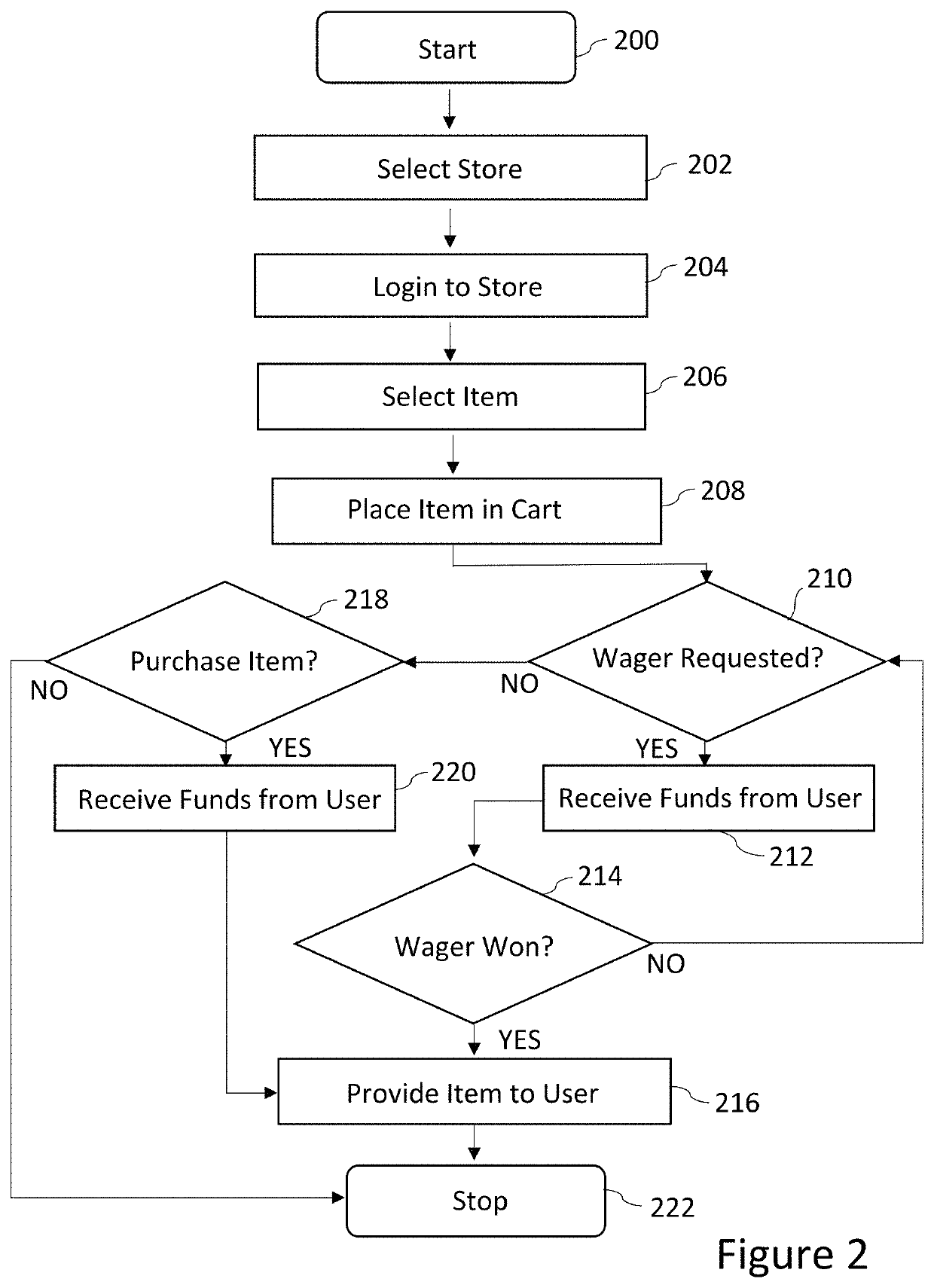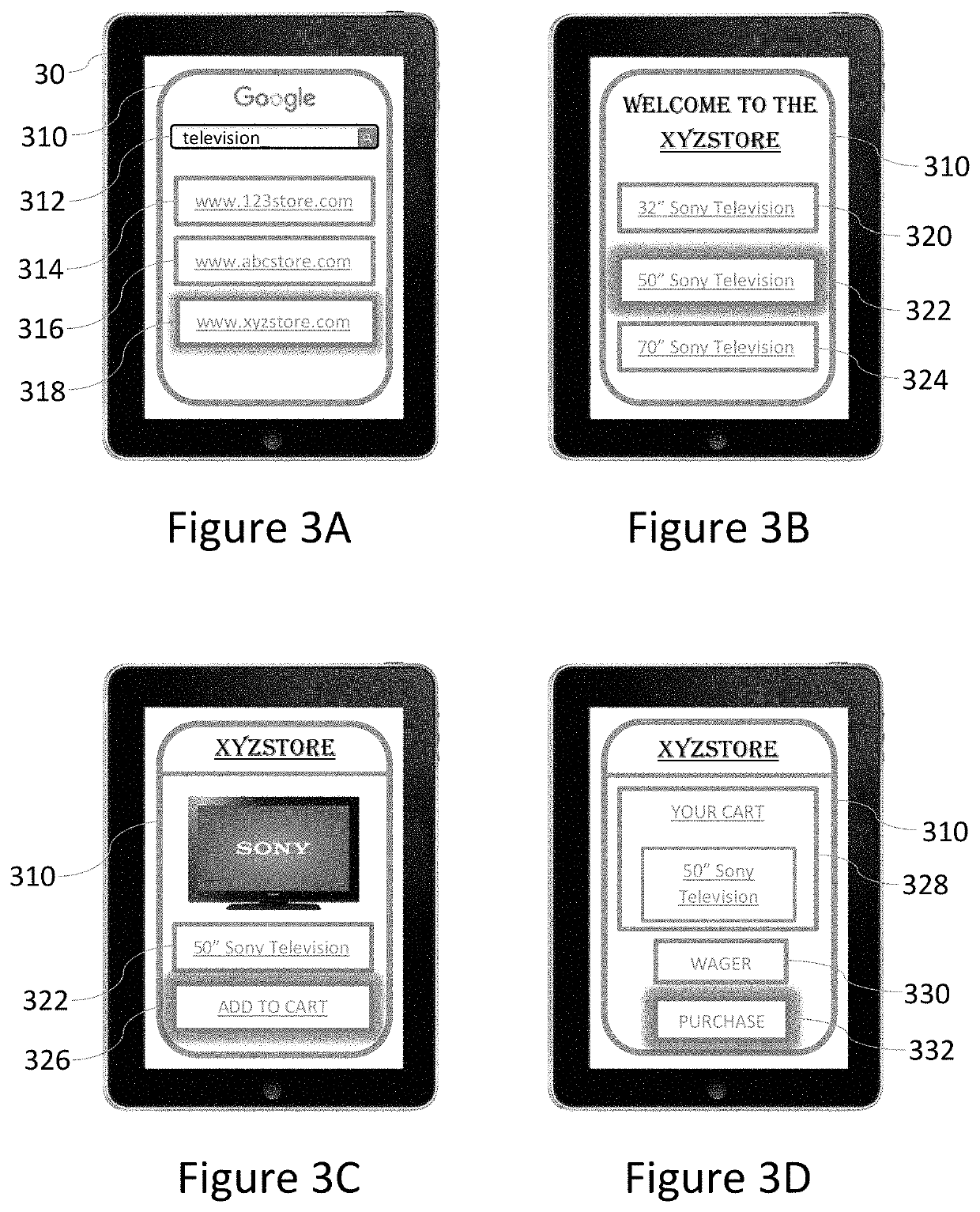System and method for incorporating a wagering activity into an electronic commerce transaction
a technology of electronic commerce and wagering activity, applied in the field of system and method for incorporating a wagering activity into an electronic commerce transaction, can solve the problems of difficult implementation on the internet, difficult to stand out on the internet, and difficult to compete with giants like ebayTM, and achieve the effect of instilling a level of confidence with the user and rapid pa
- Summary
- Abstract
- Description
- Claims
- Application Information
AI Technical Summary
Benefits of technology
Problems solved by technology
Method used
Image
Examples
first embodiment
[0045]In the present invention, the merchant (i.e., an ecommerce website offering items for sale, such as Amazon™) is responsible for offering and performing the wagering activity. In this embodiment, as shown in FIG. 2, the method starts at step 200, where the user selects an online merchant at step 202, which may be accomplished by entering the merchant's Uniform Resource Locator (URL) (e.g., www.amazon.com) into the address bar of a web browser, or by clicking on a hyperlink for the merchant from a search result (e.g., Google™ search result). The user may then login to the merchant's website at step 204, which may require the user entering authenticating information, such as user name, password, biometric data, etc. Alternatively, the user could enter the merchant's website as a guest.
[0046]The user may then search (or browse) the merchant's website and select an item to purchase at step 206. The item is then placed in the user's virtual shopping cart on the merchant's website (i...
second embodiment
[0059]In the present invention, the merchant (i.e., an ecommerce website offering items for sale, such as Amazon™) is not involved in the wagering activity. Instead, the wagering activity is allowed and operated by a host in communication with both the merchant and the user via the Internet. In this embodiment, as shown in FIG. 4, the method starts at step 400, where the user logs into the host device at step 402. The login information (e.g., user name, password, biometric data, etc.) is used to authenticate the user, and identify the user's account on the host. Alternatively, the user may proceed as a guest. At step 404, the user may then select a merchant (or store) from a plurality of merchants (or stores) available on the host. The host then logs into the selected merchant at step 406. The login information (e.g., user name, password, etc.) is used to authenticate the host, and identify the host's account with the merchant. This is a crucial part of this embodiment. While the us...
third embodiment
[0081]It should be appreciated that the present invention is not limited to the method recited in FIG. 6, and other methods including fewer, additional, or different steps are within the spirit and scope of the present invention. For example, as discussed above, funds may be secured instead of received at step 616. By way of another example, funds may be secured, received, released, or returned before step 620, depending on a balance due or owed after the wager activity (see discussion above).
[0082]It should also be appreciated that while the third embodiment may only require a single shopping experience (i.e., the user shopping on the merchant's website), the host's ability to monitor this experience, provide the user with a gaming activity (e.g., via a pop-up), and intervene to provide host payment information to the merchant (e.g., via the user's session with the merchant) provides a solution that is rooted in computer technology in order to overcome a problem that arises when th...
PUM
 Login to View More
Login to View More Abstract
Description
Claims
Application Information
 Login to View More
Login to View More - R&D
- Intellectual Property
- Life Sciences
- Materials
- Tech Scout
- Unparalleled Data Quality
- Higher Quality Content
- 60% Fewer Hallucinations
Browse by: Latest US Patents, China's latest patents, Technical Efficacy Thesaurus, Application Domain, Technology Topic, Popular Technical Reports.
© 2025 PatSnap. All rights reserved.Legal|Privacy policy|Modern Slavery Act Transparency Statement|Sitemap|About US| Contact US: help@patsnap.com



